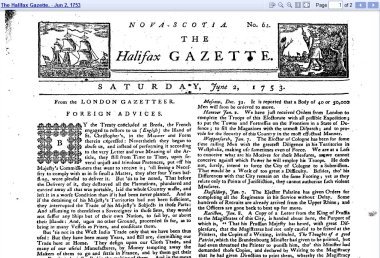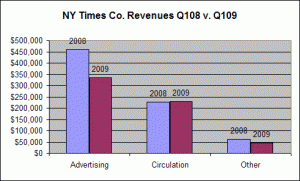Things are looking up in Seattle. Shortly after the closing of the Seattle Post-Intelligencer just five months ago, the surviving Seattle Times asked publicly if the city was about to become a “no-newspaper town.” Hardly. Since the P-I went under, circulation at the Times has shot up 30% to 260,000 daily readers. The paper has crept back into the black on a month-t0-month basis and is enjoying its best outlook in years.
One of the last family-owned major metros in the country, the Times has been weighed down for years by a joint operating agreement that required it to support the money-losing P-I. Fortunately for the Times, it managed circulation for both papers, so when the P-I went under, the Times simply switched subscribers to its circulation list and gave them the option to cancel. A remarkable 84% opted to stay with the Times.
But it gets better. The online remnant of the P-I is beating its numbers. Although SeattlePI.com has only one-eighth the editorial staff of the failed newspaper, it has focused its coverage and kept most of the reader traffic it had before the newspaper went under. Hearst won’t say if SeattlePI.com is making money, but it does say that audience and revenues are ahead of projections.
In other good news, Cox Enterprises has pulled the Austin American-Statesman off the market, saying the bids it was receiving didn’t reflect the true value of the paper. The American-Statesman is one of 29 titles Cox put up for sale nearly a year ago. While there were many visitors and several bids, the offers were in the fire-sale range, said publisher Michael Vivio. “it just did not make sense to sell it for the prices offered.” The story quotes newspaper analyst Ed Atorino speculating that “there are signs that the newspaper industry may have bottomed out. ‘We see hopes for better conditions by the end of 2010,’ Atorino said. ‘It’s been very difficult, and now, maybe, the worst is over.’”
A Reader Revenue Model That Works
 Amid the wreckage of the media industry, there is at least one publisher who’s charging readers for content and making a lot of money at it. He’s Christopher Kimball, the intense, non-nonsense publisher of Cook’s Illustrated and Cook’s Country magazines. The flagship Cook’s Illustrated has nearly a million subscribers who pay between $25 and $35 a year for six issues. There’s no advertising. The business is reportedly insanely profitable.
Amid the wreckage of the media industry, there is at least one publisher who’s charging readers for content and making a lot of money at it. He’s Christopher Kimball, the intense, non-nonsense publisher of Cook’s Illustrated and Cook’s Country magazines. The flagship Cook’s Illustrated has nearly a million subscribers who pay between $25 and $35 a year for six issues. There’s no advertising. The business is reportedly insanely profitable.
Kimball’s recipe is to give readers exactly what they want: no-fail recipes vetted with exhaustive trial and error in kitchens outfitted with the best gadgetry money can by. You won’t find exotic dishes in the Cook’s magazines. What you’ll find is instructions on how to make the perfect pancake, combined with exhaustive background information on details such as the role of baking powder in the process.
The Boston Globe profile says Cook’s Illustrated enjoys an almost unheard-of 78% renewal rate. Kimball charge for website access and finds readers through intensive direct-mail campaigns and a successful spinoff cooking show called America’s Test Kitchen. Though he’s a multi-millionaire, Kimball can usually be found on weekends at his Vermont farm, testing new recipes. He’s a rigid perfectionist who believes advertising is an unholy alliance that does a disservice to readers. So far, he’s confounding the critics.
Miscellany
The 23rd annual Veronis Suhler Stevenson media survey is out (TG; we’ve been on pins and needles) and finds that for the first time last year, consumers spent more time with media they paid for – like books and cable TV – than with primiarly ad-supported media. The study also forecasts somewhat counter-intuitively that media/communications will be the third fastest-growing industry in the US over the next five years, trailing only mining and construction. The growth won’t come from traditional media, though. Rather, it will be driven by new areas like paid product placement, e-mail marketing, in-game advertisements, mobile advertising and video downloads.
The New York Daily News is hiring a social media manager. It’s joins crosstown rivals New York Times and New York Post in recently putting some bucks behind the explosion of interest in Facebook and the link. The Daily News has a long way to go: it’s roster of Twitter followers is about 1/10th that of the Post’s.
The Boston Globe interviews New York Times Co. chairman Arthur Sulzberger and CEO Janet Robinson. They say the threat to shut down the Globe unless major union concessions were made was not a bluff. They also don’t plan to sell the paper to the highest bidder. They want someone who’s going to continue a history of quality journalism. And they think the Times Co. has been a splendid custodian of the Globe’s reputation. Sheesh.
We stumbled across a new search engine: Yebol that “utilizes a combination of patented algorithms paired with human knowledge to build a Web directory for each query and each user.” We’re not so sure what that means, but the search results pages are very cool.
 Ken Doctor is one of those rare breed of editors who understands the business side of newspapering. After spending nearly 25 years as an editor at papers ranging from alternative weeklies to the St. Paul Pioneer Press, he moved to Knight Ridder corporate to help lead the company’s push into new media. Doctor ultimately worked on editorial, strategy and content services for Knight Ridder Digital,
Ken Doctor is one of those rare breed of editors who understands the business side of newspapering. After spending nearly 25 years as an editor at papers ranging from alternative weeklies to the St. Paul Pioneer Press, he moved to Knight Ridder corporate to help lead the company’s push into new media. Doctor ultimately worked on editorial, strategy and content services for Knight Ridder Digital, 




 Tapinko launched into the college market and has signed up more than 125 college newspapers. Emboldened by early success, the seven-person startup are now seeking alliances with mainstream publications. In May, they
Tapinko launched into the college market and has signed up more than 125 college newspapers. Emboldened by early success, the seven-person startup are now seeking alliances with mainstream publications. In May, they 





